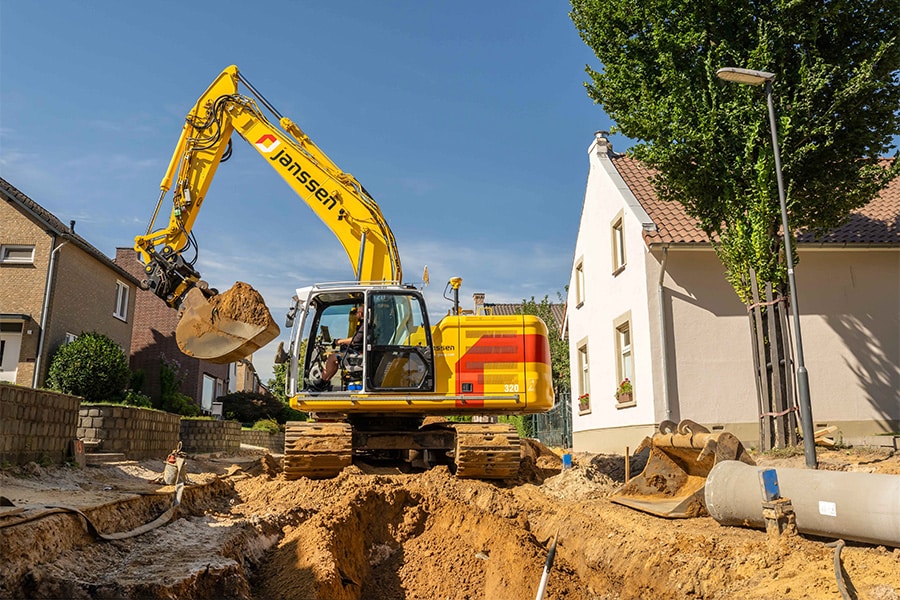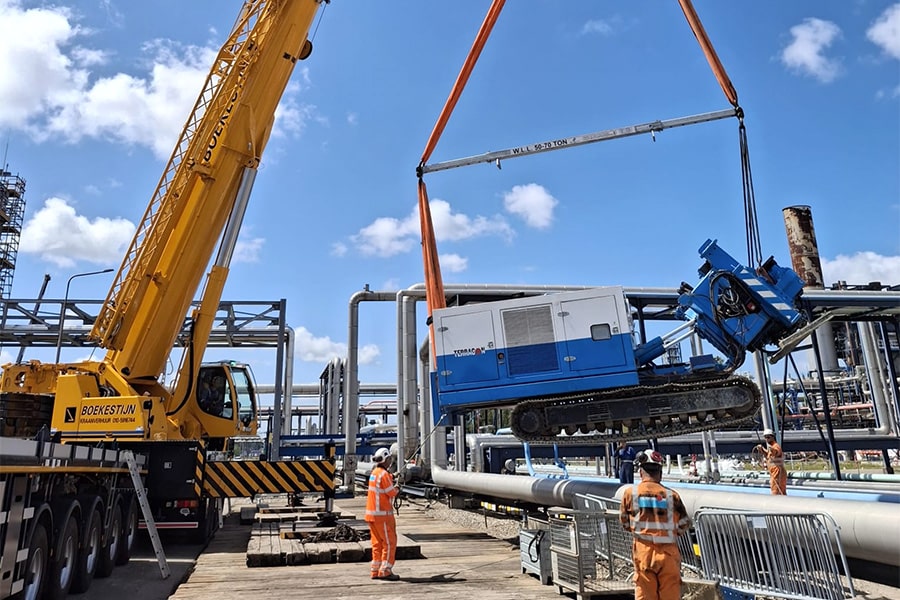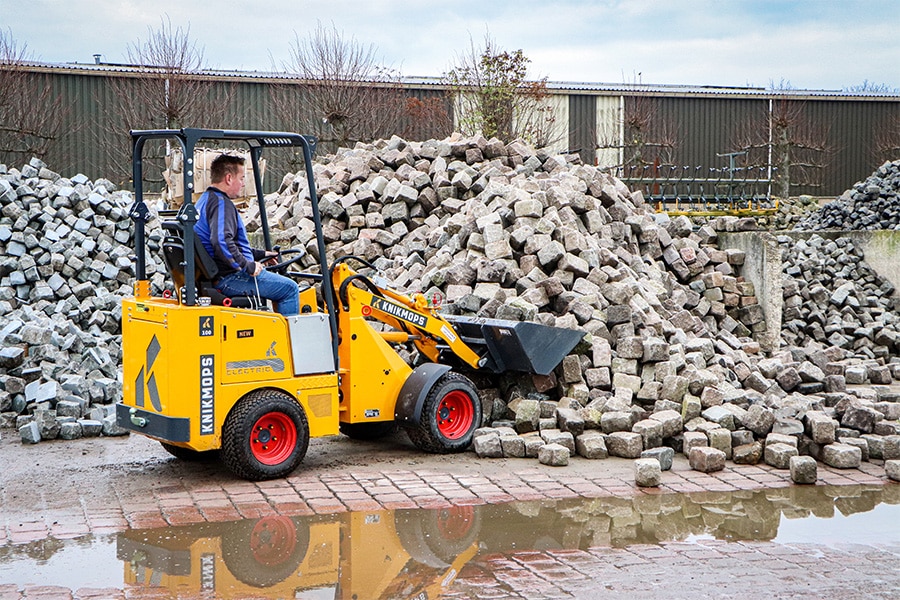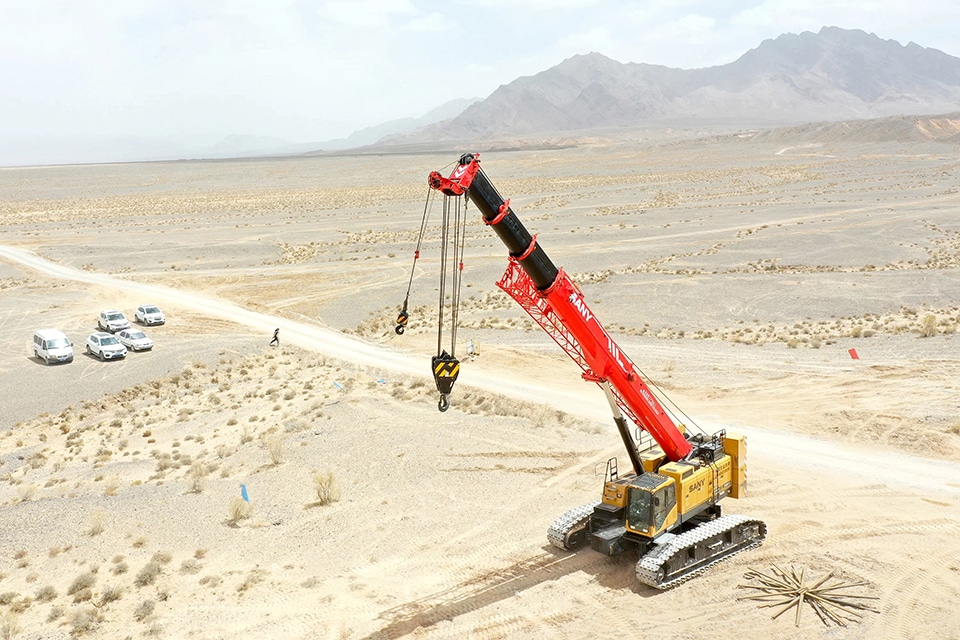
Chinese power with Dutch touch
Sany builds first all-electric-powered grower crane
In the world of lifting and hoisting, too, electrification is on an unstoppable march. The Chinese company Sany, which is marketed in the Benelux by the Dutch company UCM Holland, now has three fully electric cranes in its product range. And they appear to have been developed in our own country. So Chinese power with a Dutch touch.
The first example of the 80-ton battery-electric crawler-mounted telescopic crane, the Sany SCE800TB-EV, was on display at Bauma in Munich last fall. Since then, they have been going out the door "like hot cakes," says Roland Quarré of UCM Holland. And although the Chinese multinational Sany is already far advanced in the field of electrification in various machine markets, this innovation in the crane field has Dutch origins.
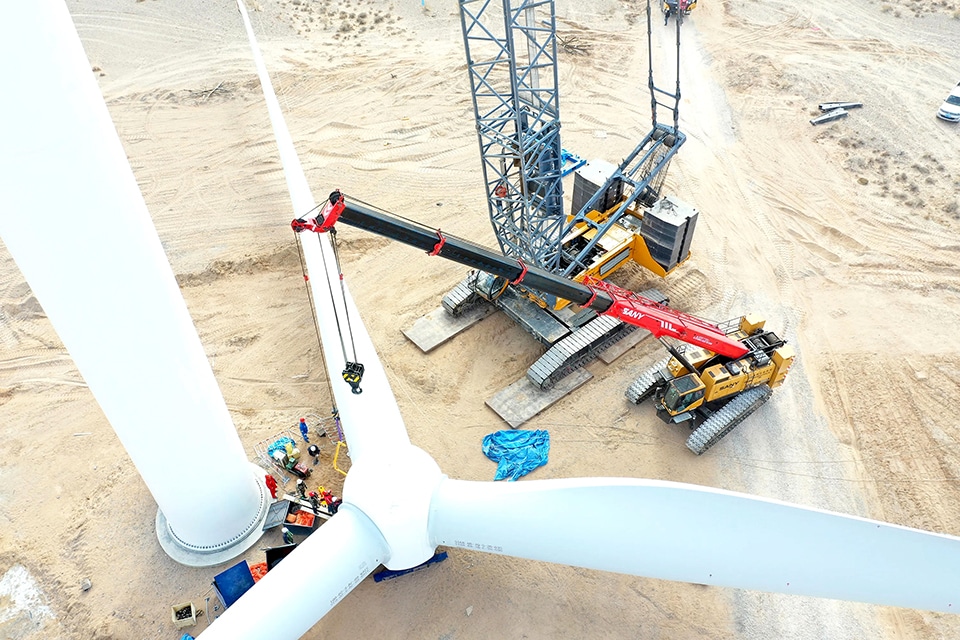
"The first request for a fully electric crane came from us as an importer," Quarré reveals. "Sany then developed and built the machine in-house. For now, though, on its own European assembly line. And despite being a large company, we have short lines of communication and regular contacts at Sany. There is also Sany's European branch in Germany. We started with Stage V machines and gradually upgraded them in many ways to our requirements for the Dutch market. Meanwhile, we saw a growing demand for electric machines."
Since the diesel-powered SCE800TB was the best-selling crane at UCM Holland, it was decided to electrify it first. Meanwhile, Sany's 100- and 135-ton lattice boom cranes (SCE1000A-EV and SCE1350A-EV) are also available fully electric.
Ex-factory
What is special about the all-electric SCE800TB-EV - as well as the SCE1000A-EV and SCE1350A-EV lattice boom cranes - is that they are delivered ex-factory. "For a while we looked at converting the diesel cranes to an electric model, but we estimated that the conversion market in the Netherlands would not be able to handle that in terms of capacity," says Quarré. "Moreover, an electric drive requires a different type of construction of the crane. We still lack the space for a conversion model. Sany's R&D department in China is of a tremendously high level in this regard, so this was the best solution."
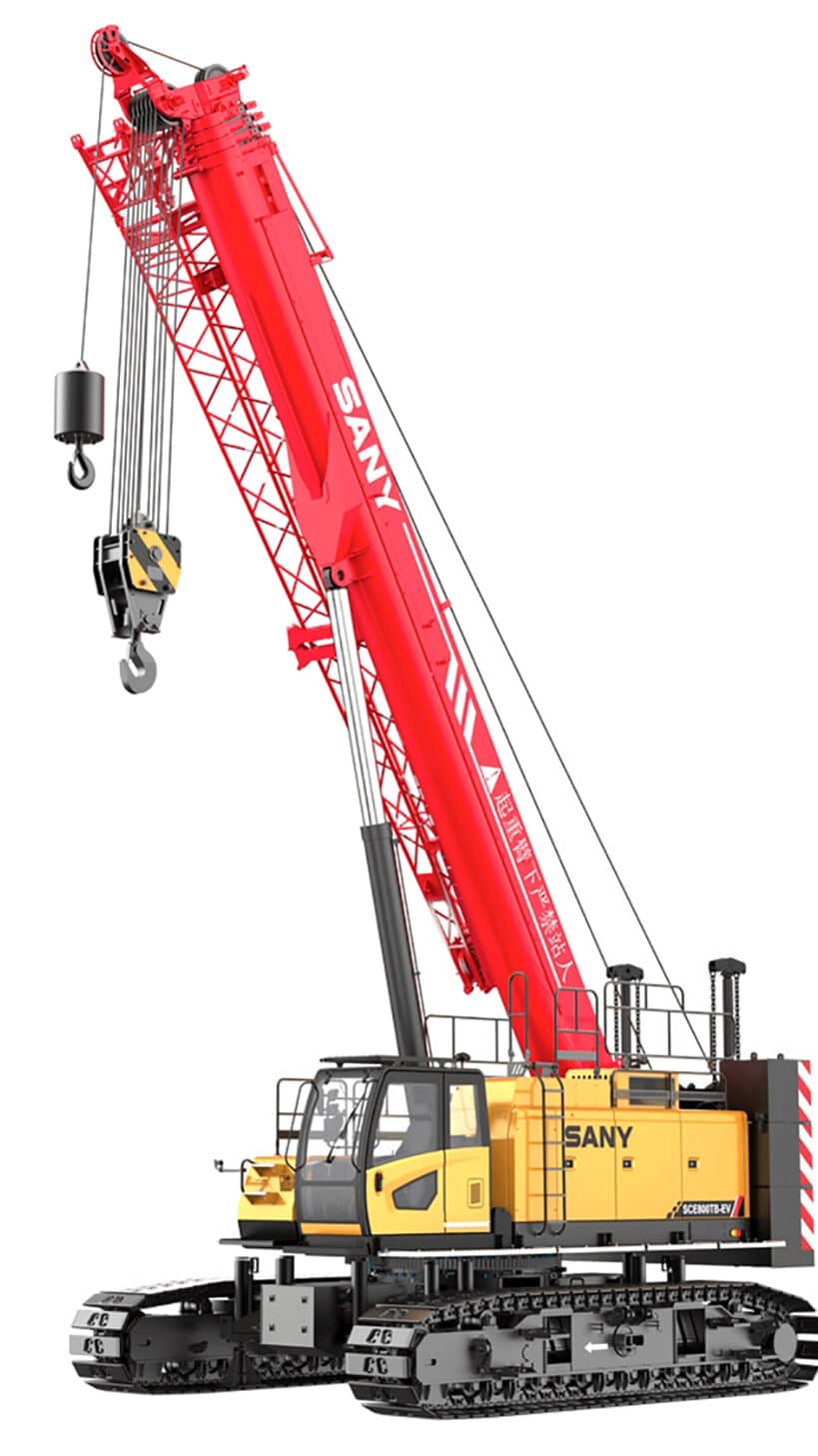
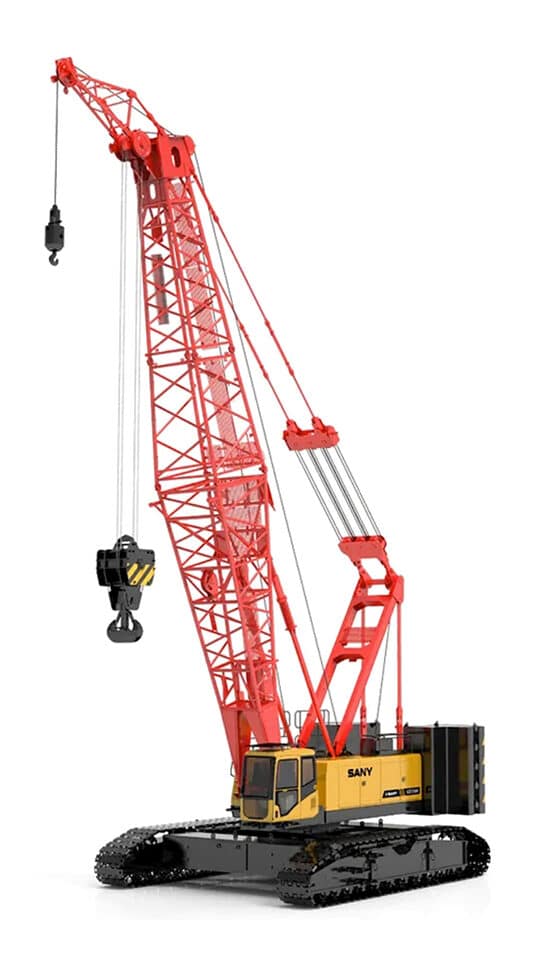
Also, the cost of conversion is often higher because disassembled diesel engines remain on the shelf. And an ex-factory electric machine has the advantage that it comes with full CE and EMC approval, and also, the major battery manufacturers are almost all in China.
FOUR PACKETS
Speaking of batteries, Sany lifting cranes are equipped with CATL's industry-leading battery packs. They use lithium iron phosphate (LFP). The Sany SCE800TB-EV features four permanently built-in 600-volt battery packs. These packs are built into two enclosures and weigh over 1,800 pounds. They deliver 456 Ah (282 kWh). The slightly higher dead weight (92 tons) compared to the diesel version benefits the lifting table.
The battery packs can be charged with enormous charging capacities of up to 120 kW. Moreover, each battery has its own charging connection. With two heavy-duty external fast chargers, you can theoretically fully charge the batteries in two hours, provided the charging infrastructure is available to do so. With a full battery, the machine can lift a full eight-hour workday without recharging, according to the manufacturer's statement.
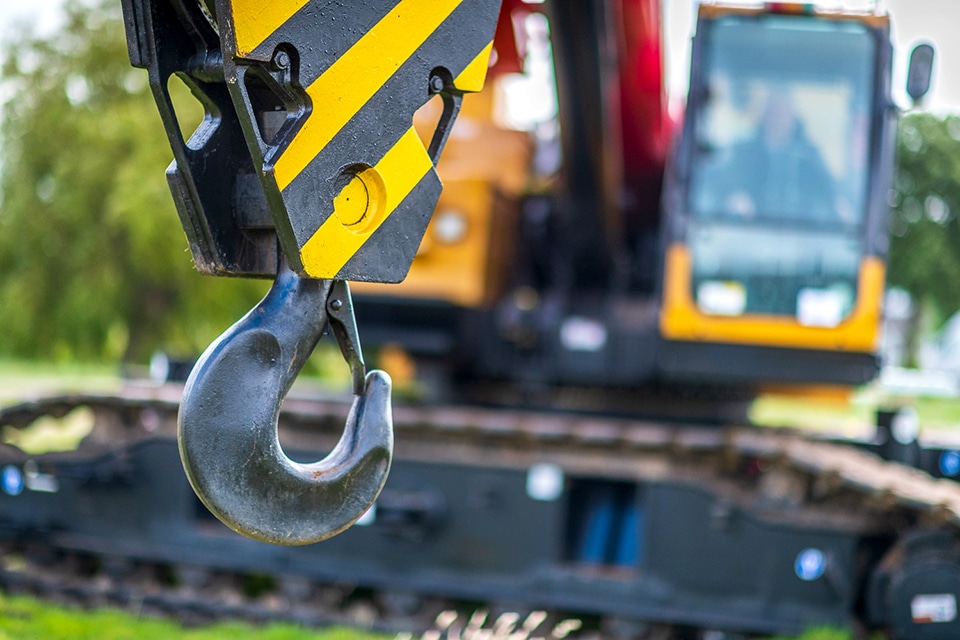
Five-piece boom
The 80-ton crane features a motor and inverter supplied by the Editron division of Denmark's Danfoss Power Solutions and a Danfoss Power Solutions D1P hydraulic pump.
The SCE800TB-EV has a five-piece boom of 47 meters and a maximum load moment of 300 ton meters. There is a 7.2-meter swing-away jib and fixed jib options are 10.2 meters and up to 17.5 meters. With the boom fully extended at 47 meters and 26 tons of counterweight at the rear, the lifting chart shows a capacity of 11 tons at a flight of 11 meters.
Inside the cab, the crane is equipped with one start and stop button, a 10.1-inch touchscreen display, electric control pedals, an electric-proportional joystick, air conditioning, Bluetooth and USB charging ports. Two cameras and illumination lights installed at the rear of the rotating bed display rear conditions and winches on the monitor.
The maximum transport width for components is 3 meters and it has load tables for use with a smaller counterweight. The maximum rear counterweight is 26 tons and two 3-ton blocks are installed as center counterweight. The 80-ton telescopic crane has a hydraulically retractable track undercarriage and the cast steel track plates are 850 mm wide.
